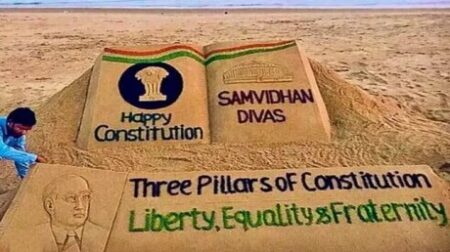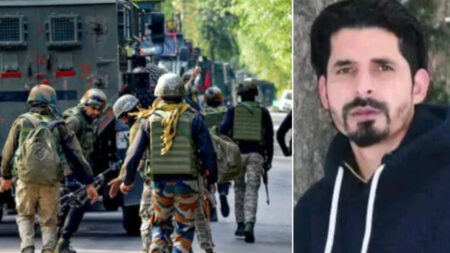SRINAGAR: In the former state, the final ruling of the Delimitation Commission for the union territory of Jammu and Kashmir has sparked a political dispute. While Kashmir-based political groups have criticized the report’s suggestions, the Bharatiya Janata Party (BJP) has welcomed it.
The issue is whether the newly formed assembly constituencies (ACs) would skew the balance of power in Jammu and Kashmir in favour of non-Muslim voters.
Despite the fact that the majority of Jammu and Kashmir’s population is Muslim (68.8 per cent according to the 2011 census), the religious mix of the population varies by area.
Kashmir’s population is composed of 96.4 per cent Muslims and 2.5% Hindus, whilst Jammu’s population is composed of 62.6 per cent Hindus and 33.5 per cent Muslims.
The most significant implication of the recommendations of the delimitation panel is that the Jammu area would now have a disproportionate number of ACs relative to its population representation in the assembly.
The regions of Jammu and Kashmir each contain 10 districts. While Kashmir is universally dominated by Muslims — the Muslim population in all districts exceeds 94% – Jammu also demonstrates sub-regional religious diversity. Only four of Jammu’s 10 districts have a Hindu majority.
In these districts, the Muslim population ranges from 7% in Jammu to 10.8% in Udhampur. This highlights the need for care when automatically interpreting an increase in the proportion of autonomous communities in the Jammu area as an increase in the proportion of ACs controlled by Hindus.
Much within districts, notably in the Jammu area, there is a large diversity in the religious mix of the population, which makes the estimate of the religious reconfiguration resulting from delimitation even more challenging.
As a result of the redistricting of assembly constituencies at the patwari circle level, it is impossible to determine the precise shift in the religious composition of the electorate.
The only publicly accessible census data that provides religious composition at the subdistrict level, a larger administrative entity, is subdistrict-level data.
A district-by-district breakdown of the BJP’s 2014 performance in the erstwhile state of Jammu and Kashmir’s assembly elections illustrates the difficulty of mechanically establishing a one-to-one correlation between district-by-district religious population shares and the BJP’s likelihood of success.
For instance, the BJP’s district-by-district seat share stayed unchanged in three out of ten districts in the Jammu area, despite the Hindu population share increasing from 28% to 40%.
Similarly, the BJP won all of the seats in the Samba and Kathua districts, but just two-thirds of the seats in the Udhampur district, despite Udhampur having a greater percentage of Hindu residents than the other two.
Certainly, the reconfiguration of the religious makeup of the voter at the assembly constituency (AC) level is not the only alteration that the process of redistricting would bring to political competition in Jammu and Kashmir. In addition, nine Scheduled Tribe (ST) reserved ACs have been formed by the new proposals that did not exist in the pre-delimitation assembly.
These ST-reserved ACs are distributed as follows: six in the Jammu area and three in the Kashmir region. The number of the seven SC-reserved assembly constituencies (ACs) in the Jammu area has been retained, although their borders may have changed.
While the creation of ST-reserved assembly constituencies appears to be consistent with the larger regional population share of STs – 13.6% in Jammu and 3.3% in Kashmir – it could alter political competition if the BJP is able to form an alliance with a new political party that claims to represent the interests of Muslim STs (they are 94 per cent of the overall ST population in Jammu and Kashmir).
Poonch, Rajouri, and Reasi are the three districts in the Jammu area that would be allotted ST-reserved ACs. In these districts, the BJP performed the poorest in the 2014 assembly elections.
Published By : Chittajallu H S Kumar
Edited By : Kiran Maharana













